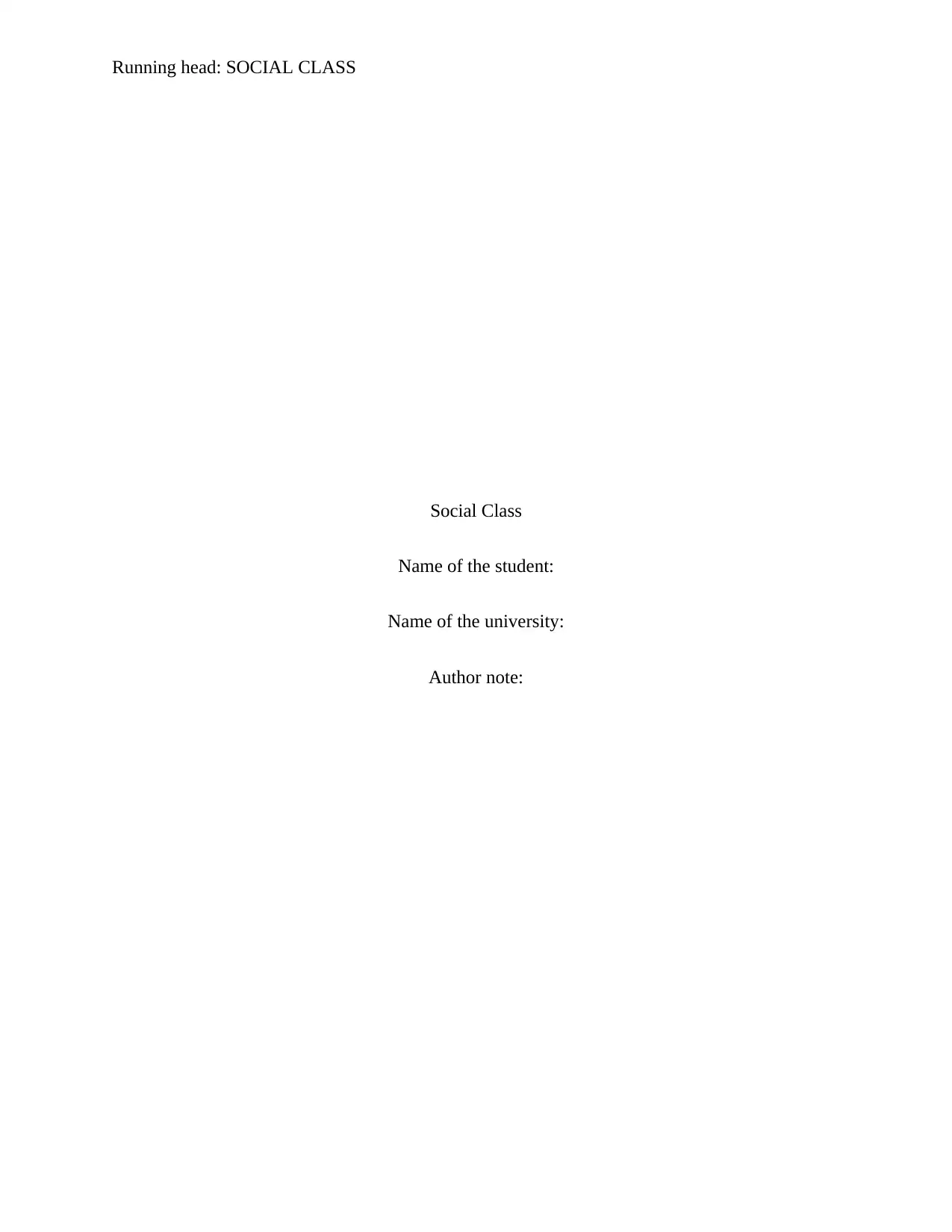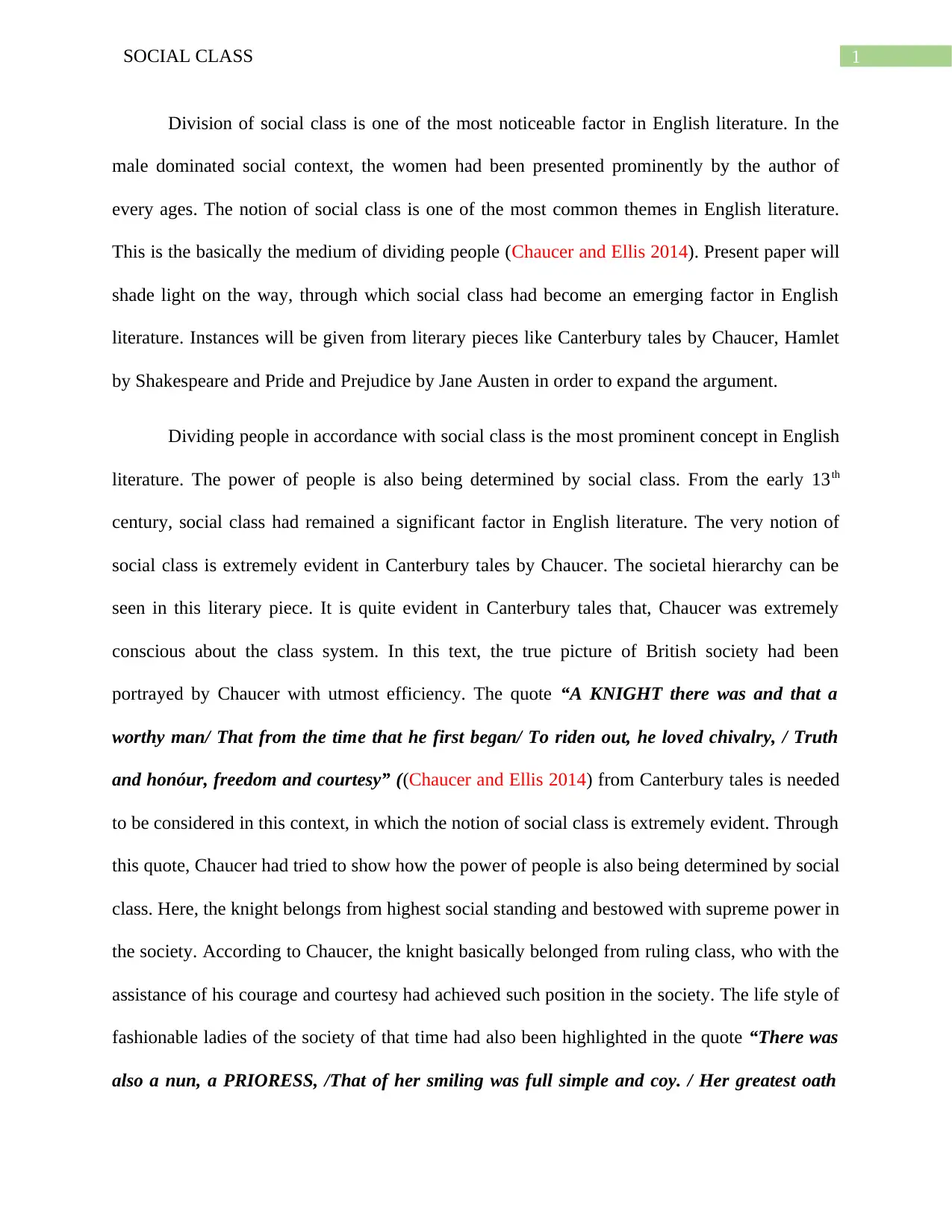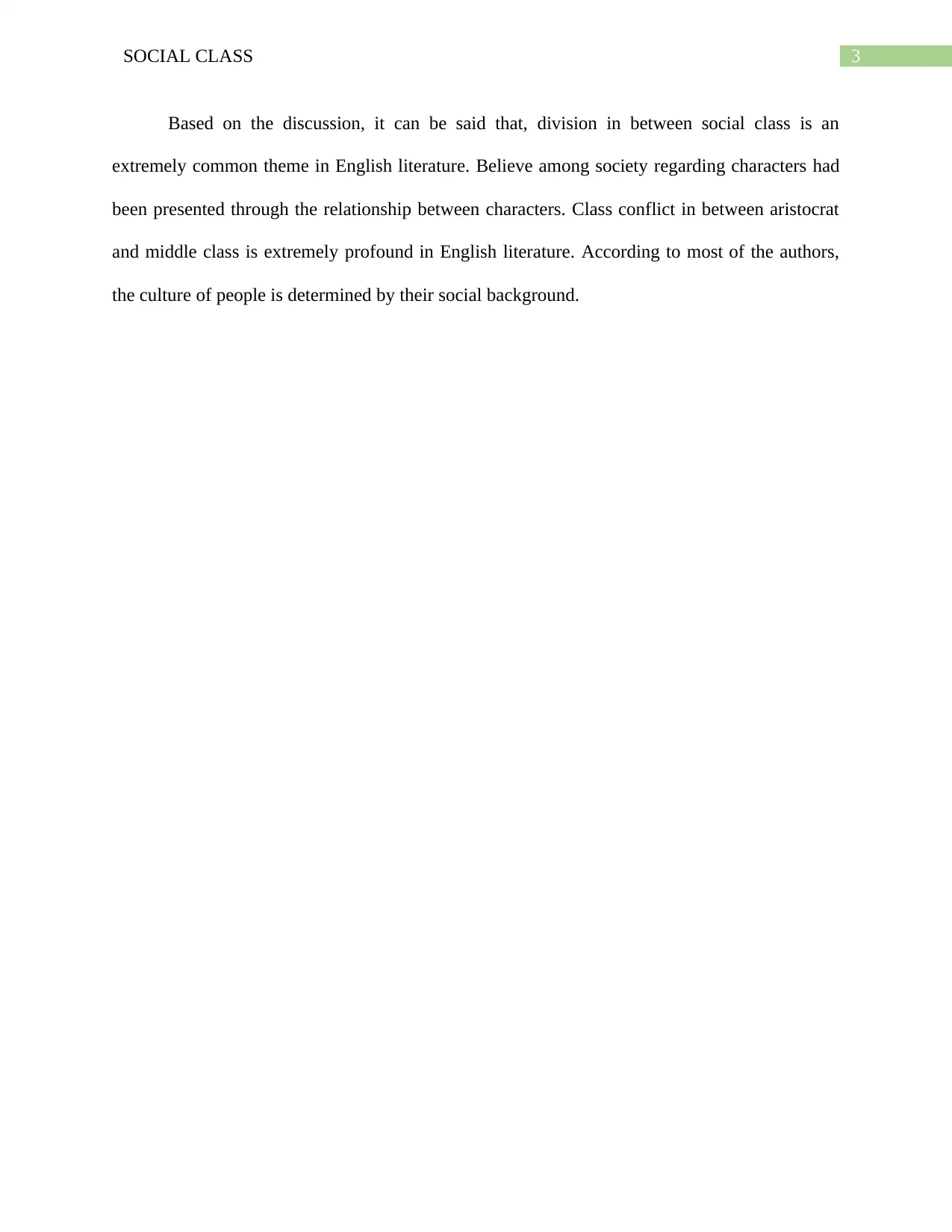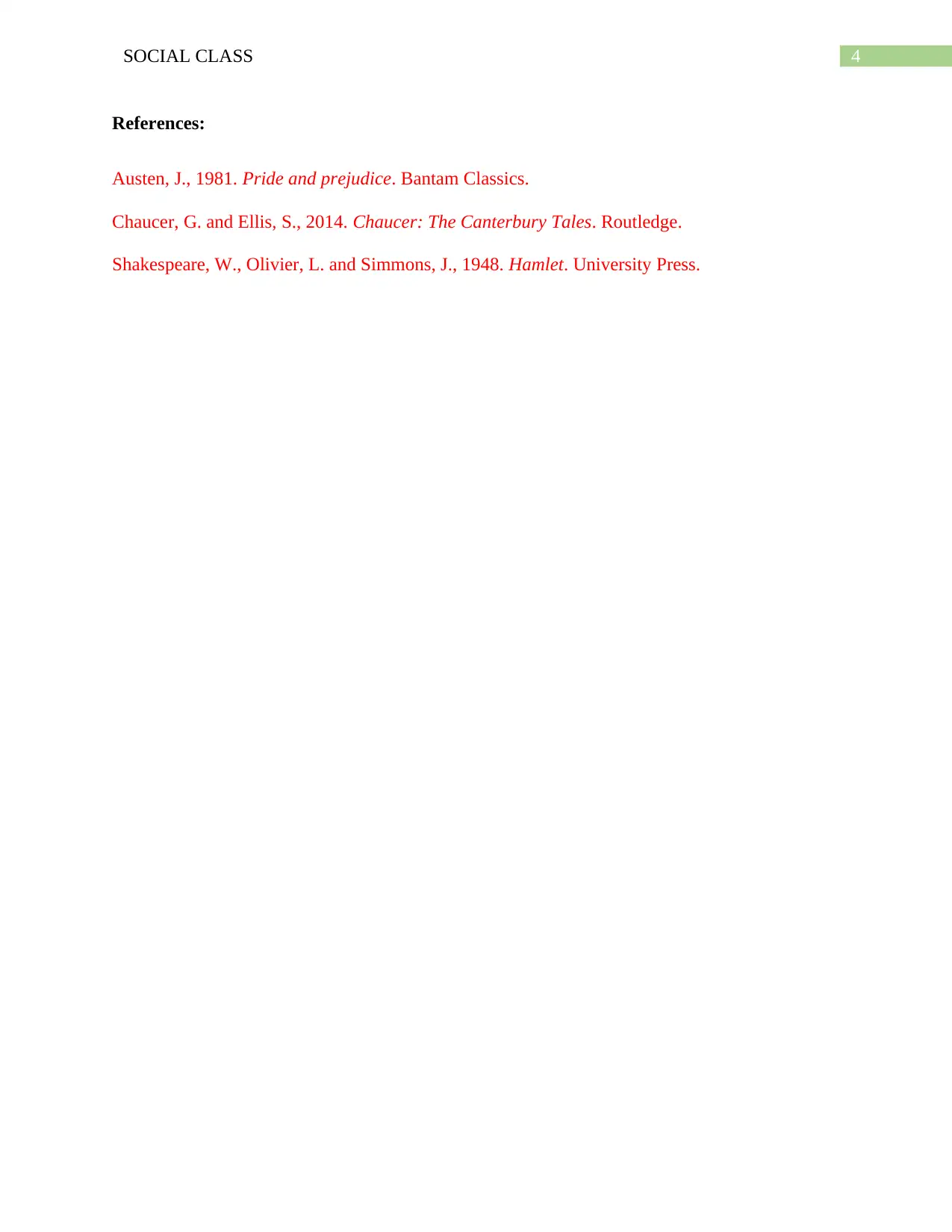An Analysis of Social Class in English Literature: Key Themes
VerifiedAdded on 2023/05/29
|5
|959
|489
Essay
AI Summary
This essay delves into the theme of social class in English literature, highlighting its significance through examples from Chaucer's Canterbury Tales, Shakespeare's Hamlet, and Austen's Pride and Prejudice. It examines how social class influences character portrayal, power dynamics, and societal hierarchies. The analysis reveals Chaucer's keen awareness of the class system in Canterbury Tales, where characters' social standing determines their power and lifestyle. In Pride and Prejudice, Austen illustrates how social class affects marriage prospects and creates prejudice among characters. Shakespeare's Hamlet explores class oppression, particularly how Hamlet's noble status shapes his actions and perceptions. The essay concludes that social class is a prevalent theme, shaping character relationships, cultural values, and conflicts between different social strata, reflecting societal beliefs and power structures.
1 out of 5








![[object Object]](/_next/static/media/star-bottom.7253800d.svg)